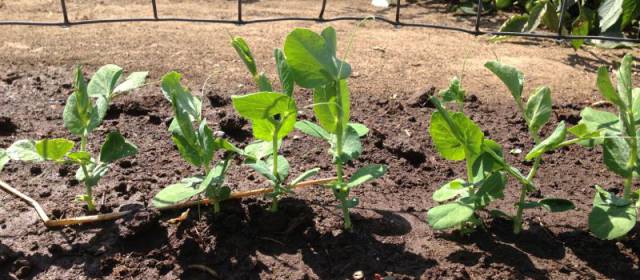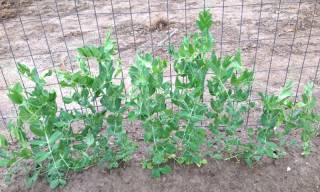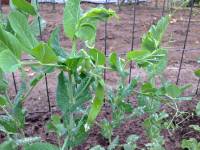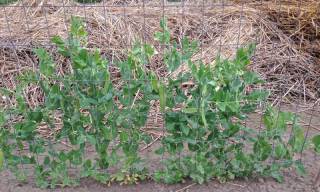Table of Contents
Fall peas
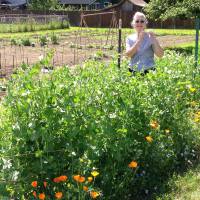 We hadn't heard of growing a second crop of peas for fall harvest until recently, and we found only a few tips about the challenges. So I have chronicled our approach to a fall pea harvest. We are growing the Maestro variety, a shelling pea because it generally grows well, has filled out pods of up to ten peas, and resists more than some others the little worms in the pods.
We hadn't heard of growing a second crop of peas for fall harvest until recently, and we found only a few tips about the challenges. So I have chronicled our approach to a fall pea harvest. We are growing the Maestro variety, a shelling pea because it generally grows well, has filled out pods of up to ten peas, and resists more than some others the little worms in the pods.
Our spring 2014 crop of shelling peas was not nearly as good as last year's, so we are attempting a fall crop. We prefer “sHelly” peas and had good yields with Maestro from Uprising Organics so we planted this variety again. Maestro favors pea production over height and it fills pods with six to ten peas consistently. And peas taste great.
We have t-posts and fencing from the spring so we are using the same area. We know that peas are a cool-weather crop, yet we read about planting in warm weather and harvesting before the first killing frost.
Challenges
There is one challenge of getting the peas to grow in the hot weather. Unlike a lot of veggies, peas grow more slowly with heat. And getting them to put on pods means keeping them as cool as we can. Knowing there are challenges we are pulling out all the stops to make this crop more successful than the previous one.

We added compost from our most cured bin, then a no-nitrozen fertilizer (lime, phosphate and kelp meal). We watered these in and let them cook for several weeks in our unusual sunny July. I gave the weeds a chance to sprout (surprisingly, there were only a few) and then I used the diamond hoe to terminate them. I calculated August 9 is a good date (as good as any!) so we planted.
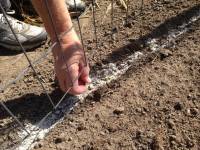
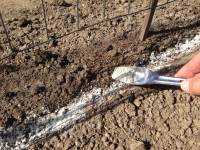 Intending to give the peas the best possible chance of getting necessary nutrients from the soil we sprinkled on Endo Mycorrhizae fungus (about 1 tablespoon to two feet) [left]. Then we inoculated the pea seeds with rhizobial bacteria to enhance their ability to fix nitrogen and planted them on top of the Mycorrhizae [right]. We soaked the peas for a couple of hours, then drained them and put a teaspoon of the rhizobia in the jar and shook them all up.
Intending to give the peas the best possible chance of getting necessary nutrients from the soil we sprinkled on Endo Mycorrhizae fungus (about 1 tablespoon to two feet) [left]. Then we inoculated the pea seeds with rhizobial bacteria to enhance their ability to fix nitrogen and planted them on top of the Mycorrhizae [right]. We soaked the peas for a couple of hours, then drained them and put a teaspoon of the rhizobia in the jar and shook them all up.
I've read that fall peas can be even sweeter than spring peas because in the fall the weather is cooler during the time the peas are ripening. We'll see how they grow and how they taste in about 90 days.
After 5 days
 I was surprised to see the tips of pea view peeking fro the soil after five days. And there appears to be a very high rate of germination.
I was surprised to see the tips of pea view peeking fro the soil after five days. And there appears to be a very high rate of germination.
After 16 days
After 27 days
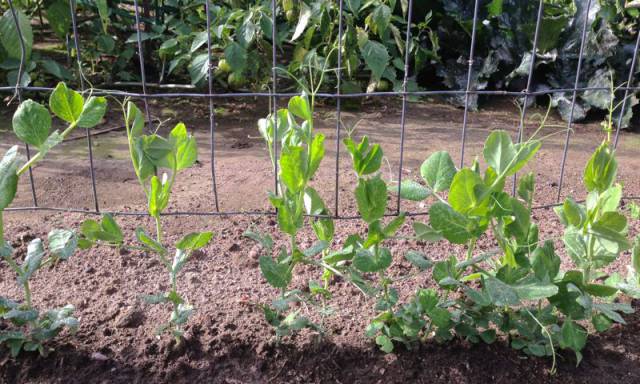 We're really pleased with how our fall pea plants are stretching out. Compared to the spring planting, these have germinated better, and they are looking healthier, and grabbing onto the fence more aggressively. The extra effort with innolucation and Endo Mycorrhizae fungi seems to have made a difference.
We're really pleased with how our fall pea plants are stretching out. Compared to the spring planting, these have germinated better, and they are looking healthier, and grabbing onto the fence more aggressively. The extra effort with innolucation and Endo Mycorrhizae fungi seems to have made a difference.
After 30 days
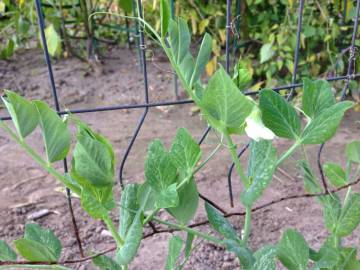 Some plants began to flower at 30 days. The fall peas are looking healthy and there are few casualties (perhaps the deer aren't expecting peas in the Fall).
Some plants began to flower at 30 days. The fall peas are looking healthy and there are few casualties (perhaps the deer aren't expecting peas in the Fall).
After 35 days
After 45 days
After 52 days
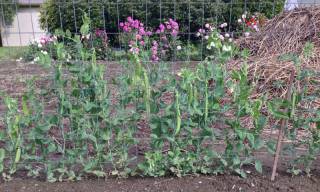 Plants are strong and healthy and the pods are filling out. We'll be having fresh peas for supper next week.
Plants are strong and healthy and the pods are filling out. We'll be having fresh peas for supper next week.
After 54 days
 I was checking the peas today and I saw some pods really filled out. So today was the first day of Fall pea harvest.
I was checking the peas today and I saw some pods really filled out. So today was the first day of Fall pea harvest.

